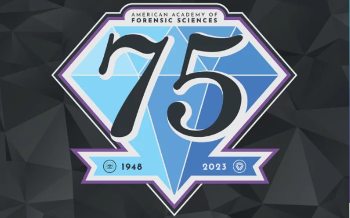The Microscopical Recognition and Characterization of Pigmented Fibers
This week (13-18 February 2023) the American Academy of Forensic Sciences will celebrate its 75th anniversary at its annual conference in Orlando, Florida. On Friday, February 17th, Christopher Palenik, Ph.D. will present The Microscopical Recognition and Characterization of Pigmented Fibers in the Paint, Hair, Fibers, and Tires sub-session of the Criminalistics session.
Dr. Palenik’s presentation will provide attendees with an approach to recognize, prepare, characterize, and compare pigmented (i.e., solution dyed) fibers in a practical manner intended to be integrated into the existing workflow of a forensic fiber examination.
For more information about the conference, click here.
Abstract
The Microscopical Recognition and Characterization of Pigmented Fibers, Kelly Brinsko Beckert, BS, MS; Otyllia Abraham, BS, MS; Ethan Groves, BS; Skip Palenik, BS; Christopher Palenik, MS, PhD (presenting author)
Pigmented (i.e., solution dyed) fibers, in contrast to dyed fibers, are colored by the fiber manufacturer prior to extrusion through the addition of fine, microscopic and sub-microscopic solid pigment particles. Due to the historically lower production of pigmented fibers and the extremely fine nature of the pigments, forensic research on this topic has been limited. However, solution dyed fibers have been steadily gaining market share, utilizing an increasingly broad range of pigments, and are being used in an increasing variety of polymers for an expanding range of applications (including trunk liners of vehicles as well as commercial and consumer carpeting). Despite their size, the visualization and identification of these fine pigment particles is accessible using robust methods that are already common (e.g., polarized light and fluorescence microscopes), or are becoming more common (e.g., Raman microspectroscopy), in trace evidence laboratories.
This research aims to expand the knowledge base surrounding pigmented fibers through a systematic, microscopical study of a population of pigmented fibers using visual, microscopical methods accessible to a trace laboratory. The fibers selected for this study have been drawn from our internally developed, curated fiber collection of consisting of thousands of pigmented fibers. The fibers studied here were chosen to represent a range of manufacturers that span a variety of commercial applications, colors, and fiber types. For example, polyolefins have always been pigmented since they cannot be dyed; however, the range of commercially available pigmented fibers has expanded to include polymers such as nylon, polyester, and rayon that traditionally have been colored using dyestuffs,.
This presentation will summarize results arising from a critical microscopical study of this sample set by polarized light, oil immersion, and fluorescence microscopy. This direct study of pigments within fibers is supported by concurrent research into sample preparation techniques, including longitudinal whole mounts and transverse, thin cross sections. These methods of preparation, which include considerations for both mounting and embedding media, as well as cross section thickness and microscopical imaging conditions, have been optimized to maximize the resolution of individual pigment particles that often approach, or at times exceed (are smaller than) the resolution limits afforded by white light microscopy. For example, the imaging of longitudinal mounts of fibers (which represents the main mounting approach presently used in forensic laboratories to study fibers) colored by pigmentation can result in a mass tone color in which individual pigments may not be readily observed or characterizable due to the relative size of the pigments compared to the overall thickness of the fiber. In fact, the discrimination of a delustered (TiO2 inclusions) and a pigmented fiber may be challenging to in longitudinal preparations. Using thin sections ranging from a thickness of 2 µm, down to as thin as 200 nm, higher magnification objectives, oil immersion, and fluorescence microscopy, individual pigment crystals can be visualized, enumerated, and characterized by size and morphology.
The primary result of this research is the development of a systematic technical method to a) recognize pigmented fibers, b) microscopically characterize the range and properties of pigments within the fibers, and c) offer insights into trends and significance of the pigmented encountered. Ultimately, this research is focused on providing bench-level trace evidence analysts with a supplemental, complementary approach to existing fiber examination protocols and thus advance microscopical fiber examinations utilizing equipment that is readily available.
How May We Help You?
Contact usto discuss your project in more detail.








